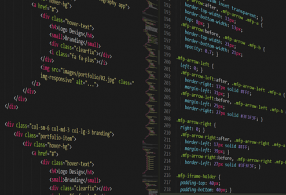Recent estimates forecast that more than 20 billion apps will be downloaded worldwide this year, with mobile apps now the key component fo business to compete in the marketplace. Therefore, in 2020, it is more important than ever for software developers to match programming language, frameworks, and tools to an app that meets the needs of your business.
Java was for many years the most popular, general-purpose language for Android with an enormous global community of developers. However, compared to newer languages, Java has become a legacy system that is difficult to use and contains many bugs. There are hundreds of other languages in widespread use that can be used for mobile app development, with new programming trends each year. The best of these are easier to use than old Java and offer many advancements that can be applied to an ever-expanding range of purposes. The best software developers are on top of these trends and they lead the way in learning the languages that offer the most in flexibility and innovation.
These are the most popular of the new languages being used for app development in 2020, each of which has unique functions that developers can apply to your business.
Kotlin
Kotlin was designed to interact easily with the existing Java language while at the same time cutting the lines of code to be more precise. One of its major initiatives was to overcome many of the programming challenges of the Java language.
Google recently announced it was their preferred language for Android app developers. It is easy to learn, reliable, supports cross-platform and is known for reducing crashes at runtime.
React-Native
Fast becoming the most preferred open-source language for cross-platform solutions. It enables the creation of both Android and iOS apps using a single platform. With a simple user interface, the Facebook-created React-Native offers cost-effective optimal performance and code re-usability along with a large developer community.
Vue-Native
With a smooth and easy learning curve due in part to its focus on view layers, Vue-Native is a JavaScript framework ideal for cross-platform development. It uses Vue.js and offers easy connectivity with React Native, giving users the best features of both, as well as the ability to share source coding with other developers. It comes with tools that grant streamlined access to plug-ins, high-speed development, and lower costs.
Swift
Swift is the rapidly rising Apple programming language that is the most likely contender to replace the long-established, widely used but older Objective C. Open source, easy to learn and supported by the Core ML, Vision and AR kit frameworks, Swift is popular for iOS, macOS, tvOS, watchOS and Linux applications. In a relatively short time, it has attracted a large support community and an array of third-party tools.
Python
A high-level programming language, which supports multiple systems and platforms. Python gives rise to quick development by using less code. Even a small team can handle Python effectively. It is popular for its functionality in creating a wide range of back-end functions, including libraries, and in writing scripts and plug-ins. For example, a feature of its syntax is that it is quicker and easier for programmers to create plug-ins than it is when using Java or C++.
C#
Similar to Java, this language sits at the high-end of the technical scale and yet it can be easier to learn due to its clean, simple syntax, thereby boosting its popularity. It’s widely used for a business’s internal applications and for creating bespoke software.
Flutter
Using the object-orientated Dart programming language, Flutter is a streamlined, reactive Google SDK. It is highly productive as you can create apps across Android and iOS from just one base code. As it uses its own ready-made widgets, Flutter does not need the same level of communication between the app and the platform to access OEM widgets. This gives Flutter the advantage of faster app startup time and fewer issues with performance, which is ideal for simpler apps.
PHP
Constantly evolving and improving, PHP is the open-source language that can be directly embedded into HTML. This makes it ideal for creating web applications and for extracting data from databases. Primarily used for the design of dynamic websites, programming knowledge of this language means you can extend its use to the creation of all types of web and mobile apps.
In the rapid-fire world of mobile app development, new programming languages are constantly coming into fashion with designers, while popularity ebbs and flows. Staying on top of the trends and knowing the languages most actively used by developers is vital, as is identifying the languages that best suit your business requirements.
At Appello, our software designers are working with the newest 2020 language trends. We are one of Australia’s leading software companies.
If you would like information on how to get started, call or text our team on 0478187677.



